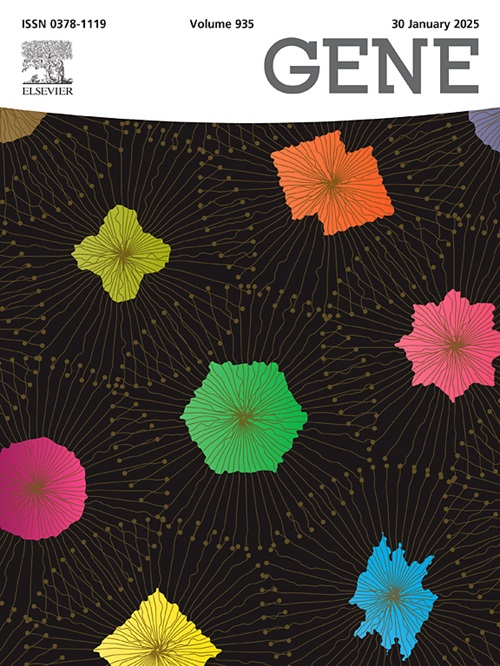Maternal viral infection during pregnancy affects gene expression of offspring in pons and medulla oblongata after bacterial infection
IF 2.4
3区 生物学
Q2 GENETICS & HEREDITY
引用次数: 0
Abstract
Viral and bacterial infections during pregnancy are risk factors for autism spectrum disorder (ASD) and schizophrenia in offspring. Polyinosinic-polycytidylic acid (poly I:C) and lipopolysaccharide (LPS) are often used as models for viral and bacterial infections, respectively. Maternal immune activation (MIA) using poly I:C or LPS is an animal model for studying ASD and schizophrenia. MIA induces abnormal behaviors in offspring, including anxiety- and depression-like behaviors and reduced social interactions. Neonates are immunologically immature and therefore susceptible to infections. Thus, a two-hit immune activation model was created in which a pseudo-viral infection occurs during pregnancy, followed by a pseudo-bacterial infection during the neonatal period. In this study, we induced a pseudo-bacterial infection (LPS administration) on postnatal day (P) 11 in pups born to rats infected with a pseudo-virus (poly I:C administration) on gestational day 10. Offspring administered LPS on P 11 due to viral infection during pregnancy had a significantly higher mortality rate, at 76.9 %, compared to 24.0 % in the control group. Furthermore, blood biochemistry test results revealed that viral infections during pregnancy are associated with decreased levels of calcium, phosphate and triacylglycerol, and increased levels of lactate dehydrogenase and total bilirubin. Although abnormalities in the pons and medulla oblongata are suspected in both ASD and schizophrenia, few studies have examined gene expression in these regions. Therefore, we analyzed gene expression in these regions using DNA microarrays. The results showed that the expression of a number of genes changed by more than twofold. These results suggest that the abnormal gene expression in the pons and medulla oblongata affected by MIA may increase vulnerability to LPS.
妊娠期母体病毒感染对细菌感染后子代脑桥和延髓基因表达的影响
怀孕期间病毒和细菌感染是后代患自闭症谱系障碍(ASD)和精神分裂症的危险因素。多肌苷-多胞酸(poly I:C)和脂多糖(LPS)通常分别被用作病毒和细菌感染的模型。利用poly I:C或LPS进行母体免疫激活(MIA)是研究ASD和精神分裂症的动物模型。MIA会诱发后代的异常行为,包括焦虑和抑郁样行为以及社交互动减少。新生儿免疫发育不成熟,因此易受感染。因此,建立了一种双重免疫激活模型,其中在怀孕期间发生伪病毒感染,随后在新生儿期间发生伪细菌感染。在本研究中,我们对妊娠第10天感染伪病毒(poly I:C给药)的大鼠所生的幼鼠在出生后第11天(P)诱导假细菌感染(LPS给药)。由于怀孕期间病毒感染,在p11给予LPS的后代死亡率明显更高,为76.9%,而对照组为24.0%。此外,血液生化检测结果显示,孕期病毒感染与钙、磷酸盐和甘油三酯水平降低以及乳酸脱氢酶和总胆红素水平升高有关。尽管脑桥和延髓的异常在ASD和精神分裂症中都被怀疑存在,但很少有研究检测这些区域的基因表达。因此,我们使用DNA微阵列分析了这些区域的基因表达。结果表明,一些基因的表达改变了两倍以上。这些结果提示MIA影响的脑桥和延髓基因表达异常可能增加LPS易感性。
本文章由计算机程序翻译,如有差异,请以英文原文为准。
求助全文
约1分钟内获得全文
求助全文
来源期刊

Gene
生物-遗传学
CiteScore
6.10
自引率
2.90%
发文量
718
审稿时长
42 days
期刊介绍:
Gene publishes papers that focus on the regulation, expression, function and evolution of genes in all biological contexts, including all prokaryotic and eukaryotic organisms, as well as viruses.
 求助内容:
求助内容: 应助结果提醒方式:
应助结果提醒方式:


